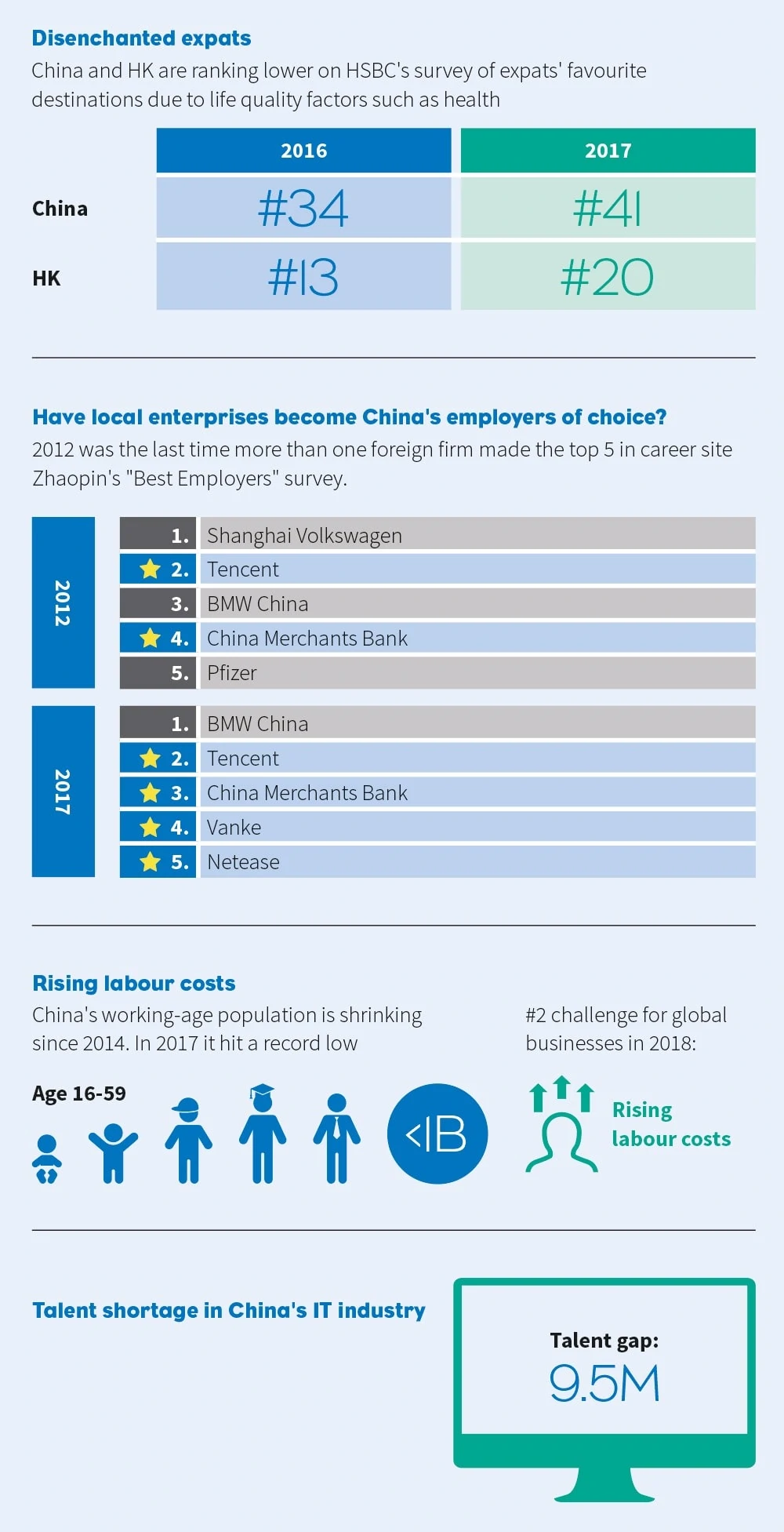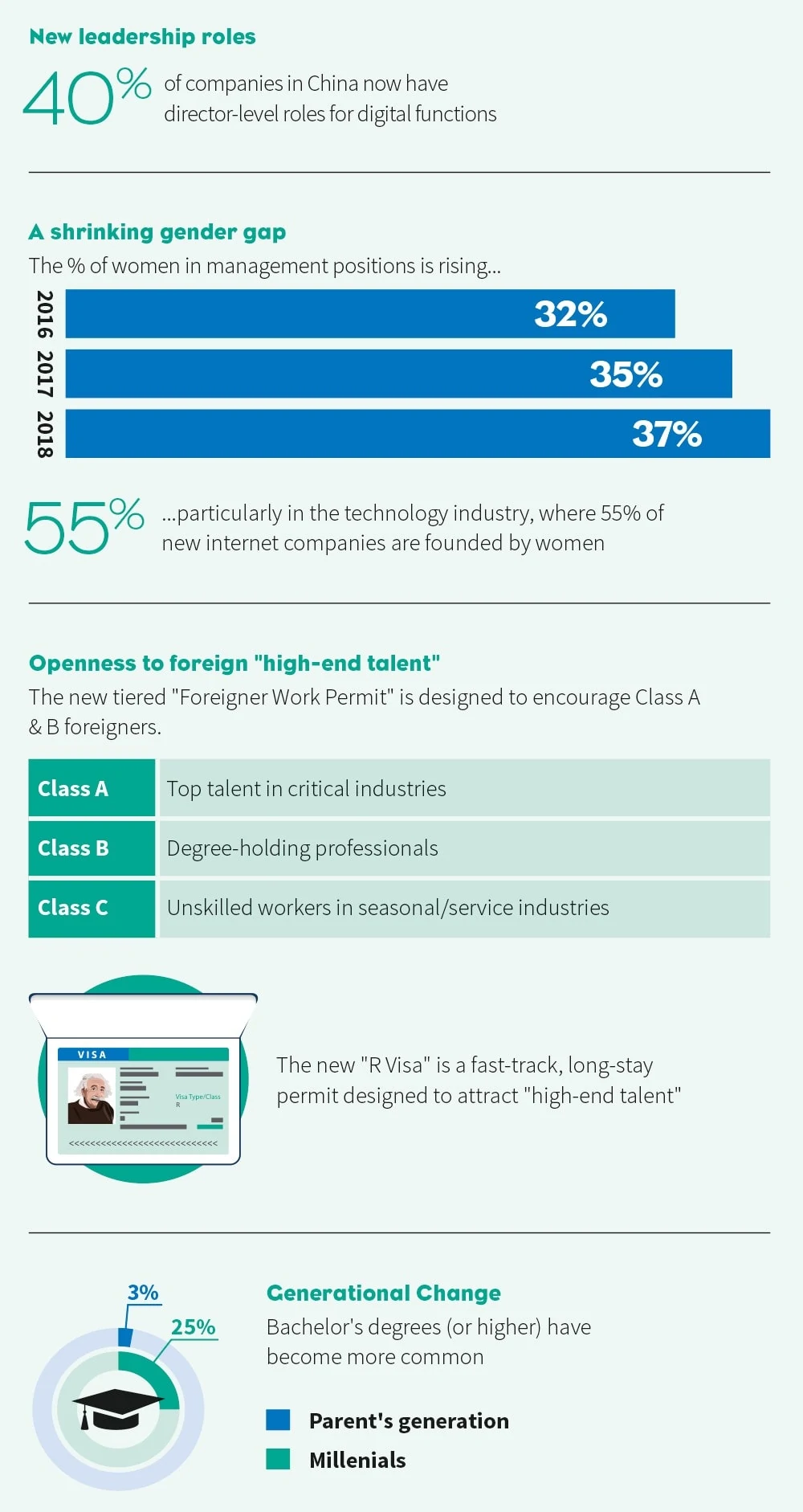As China’s economic status and strategy continues to shift, companies are adopting a variety of different strategies to reflect these changes in their approaches to HR, writes Stephan Kracht of Fiducia China
China is more affluent and innovative than ever, but also more complex and competitive. In this new reality of “China 2.0”, foreign businesses are under intense pressure to do things differently – starting with the way they structure and run their organisations.
Companies are reshaping their organisational setup and HR strategies to match “China 2.0” and cope with broader shifts happening in the country’s employment landscape, including generational change and a severe skills shortage in high-tech industries.
Agility is key if businesses wish to stay ahead in a market where trends and regulations can change unexpectedly. Other approaches include growing headcount and realising that tough competition calls for an “all in” approach. And many are strengthening their company culture through corporate social responsibility (CSR) and other engagement programmes.
Agility is key if businesses wish to stay ahead in a market where trends and regulations can change unexpectedly
Companies should be embracing change rather than shying away from it, and the potential gains for foreign companies in China have never been higher. But seizing them starts with building the right team.
China 2.0 Through the HR lense
Each organisation is a world of its own. But certain HR challenges and priorities are shared by many companies. These are some of the ways in which “China 2.0” is influencing HR agendas:
China’s Shifting Employment Landscape
Headwinds…

… & Tailwinds
5 HR Trends in China 2.0
There are no “one size fits all” solutions to the problems of finding, retaining, and developing talent, but businesses facing similar setbacks tend to come up with similar strategies. These are 5 common ways in which international companies are solving HR challenges in China:
1. Re-think your candidate profile
Multinationals have traditionally had a clear idea of which positions they want to fill with expats and which ones they need local talent for. Increasingly, however, the nationality of candidates is not specified by employers and recruiters from the outset, largely because the pool of Chinese professionals with international experience has expanded. Identifying cases where traditional assumptions no longer apply is an easy way of broadening your pool of potential candidates.
2. Build a talent pipeline
Searching for talent is becoming an ongoing and proactive effort rather than a reactive action when there’s a vacancy to be filled. Measures such as maintaining a strong industry network and investing in employer branding can help you build a pipeline of potential candidates. In industries where scarce or highly specialised skills are needed, our clients engage Fiducia’s Talent Mapping service to identify and start building relationships with candidates they might one day need.
3. De-centralise decision-making
Foreign companies are increasingly losing top talent to Chinese businesses: 30 percent of leaders crossed over from a multinational corporation to a local company in the last five years, whereas only 10 percent of leader went from a local company to a multinational. One disadvantage leaders face at foreign enterprises is that strategic decisions are made at headquarters, so their authority and ownership is limited. Shifting decision-making power to your China subsidiary is an effective way of increasing motivation and retention among senior executives.
4. Get creative with compensation
China’s economy is cooling, yet living costs keep soaring – especially in big cities. In this context, it’s difficult for companies to give their employees the salary increases they expect. Domestic top employers are implementing ingenious and more cost-effective ways of showing their employees that they understand their concerns. Alibaba, Tencent, and Xiaomi, for instance, are helping employees purchase apartments by offering subsidies or interest-free loans.
5. Invest in upskilling
Developing employees has always been a priority for HR departments, but the resources and effort directed towards it often take second place to hiring new talent. China’s fierce and costly talent wars are driving foreign companies to shift gears and realize that investing in retention and upskilling pays off. We’re witnessing this change first-hand, through the growing demand for Assessment Centres that help clients identify and then develop potential talents.





